Color Theory for Potters: Understanding Glazes and Stains
When it comes to pottery, the vibrant world of color theory plays a pivotal role in transforming ordinary clay into extraordinary art. Imagine walking into a gallery filled with stunning ceramic pieces, each one telling its own story through color. This article dives deep into the essential principles of color theory, specifically focusing on how potters can harness the power of glazes and stains to achieve their desired effects. Whether you’re a seasoned potter or just starting out, understanding color theory will elevate your work and help you create pieces that speak to the soul.
At the heart of color theory lies the understanding of how colors interact with one another. It’s not just about picking a color; it's about understanding the relationships between primary, secondary, and tertiary colors. Primary colors—red, blue, and yellow—serve as the foundation. When combined, they create secondary colors like green, orange, and purple. But wait, there’s more! Mixing primary and secondary colors yields tertiary colors, which add depth and richness to your palette. For potters, knowing these relationships is crucial, as it allows for the creation of harmonious and visually stunning glazes.
The color wheel is more than just a circle of colors; it’s a potent tool in a potter's arsenal. By understanding how to navigate the color wheel, potters can create harmonious combinations in their glazes and stains. For instance, colors that sit next to each other on the wheel, known as analogous colors, can create a serene and cohesive look. On the other hand, colors that are opposite each other, or complementary colors, can produce a vibrant contrast that catches the eye. Utilizing the color wheel effectively can help potters make informed decisions about their glazing techniques, enhancing the overall aesthetic of their work.
Speaking of contrasts, let’s dive into the world of complementary colors. These colors, which sit directly opposite each other on the color wheel, can create striking visual effects in pottery. Imagine a deep blue glaze paired with a warm orange stain—this combination not only draws attention but also adds a dynamic quality to the piece. Using complementary colors effectively can enhance the visual appeal of your ceramic creations, making them pop and inviting viewers to take a closer look.
To illustrate the power of complementary colors, let’s consider a few successful combinations:
- Red and Green: This classic pairing is reminiscent of holiday decor but can be used in unexpected ways to create a bold statement.
- Blue and Orange: This vibrant duo can evoke feelings of energy and excitement, perfect for more modern or abstract pieces.
- Purple and Yellow: This combination offers a playful and whimsical touch, ideal for decorative items.
Mixing complementary colors in glazes can be a bit tricky, as it’s easy to end up with muddy hues if not done carefully. Here are some techniques to keep your colors vibrant:
- Layering: Apply one color as a base and layer the complementary color on top. This can create depth and interest.
- Splattering: For a more playful approach, try splattering complementary colors onto your piece for a fun, abstract effect.
- Ombre Effects: Gradually blending complementary colors can create a stunning ombre effect that captivates the eye.
Color temperature is another essential aspect of glazing that potters should consider. Colors are often categorized as warm or cool. Warm colors like reds, oranges, and yellows tend to evoke feelings of warmth and energy, while cool colors like blues, greens, and purples create a sense of calm and tranquility. Understanding this concept allows potters to manipulate the emotional response of their audience. For instance, a piece dominated by warm colors may feel inviting and lively, while one with cool tones might bring about serenity and peace.
While color theory provides the framework, understanding glaze chemistry is essential for potters aiming to achieve specific colors and textures. Glazes are composed of various materials, including silica, alumina, and fluxes, which all influence the final appearance. The right combination can yield a glossy finish, a matte surface, or even a textured feel. Knowing how these components interact will empower potters to experiment and innovate their glazing techniques.
Different metal oxides play a crucial role in determining the colors of glazes. Here’s a quick guide to some common oxides and their contributions:
| Oxide | Color Contribution |
|---|---|
| Copper Oxide | Green to turquoise |
| Cobalt Oxide | Bright blue |
| Iron Oxide | Brown to red |
| Manganese Dioxide | Purple to brown |
By understanding these contributions, potters can make more informed choices when selecting glazes, ensuring their pieces achieve the desired look and feel.
Finally, let’s not forget about the beauty of stains. Stains provide potters with an alternative to traditional glazes, allowing for unique effects and finishes. They can be used to enhance the texture of a piece or create intricate designs that may not be achievable with glazes alone. Experimenting with stains opens up a world of possibilities, enabling potters to push the boundaries of their creativity and craft truly one-of-a-kind pieces.
Q: What is the difference between glazes and stains?
A: Glazes are glassy coatings that are applied to pottery and provide color and a protective layer, while stains are typically used to color the clay body or enhance textures without creating a glossy finish.
Q: Can I mix different types of glazes?
A: Yes, mixing different glazes can yield unique results, but it’s essential to test small batches first to ensure compatibility.
Q: How can I achieve a matte finish with my glazes?
A: To achieve a matte finish, you can use specific matte glazes or adjust the glaze recipe by adding materials that reduce glossiness, such as certain clay types or additives.

The Basics of Color Theory
Understanding the fundamental concepts of color theory is crucial for potters who want to elevate their craft. Just like a painter mixes colors on a palette, potters must grasp how colors interact when applied to clay. At its core, color theory revolves around the relationships between colors, which can significantly influence the aesthetic appeal of ceramic pieces. The primary colors—red, blue, and yellow—are the building blocks of all other colors. By mixing these primary colors, potters can create secondary colors like green, orange, and purple.
But wait, there's more! When you mix a primary color with a secondary color, you get what are known as tertiary colors. These are the colors that add depth and complexity to your glazes, allowing for a broader spectrum of hues. For instance, mixing yellow and green yields a vibrant shade of yellow-green, while blue and purple create a rich blue-purple. Understanding these relationships is essential for creating a balanced and visually appealing piece.
To visualize these concepts, consider the color wheel, a circular diagram that organizes colors based on their relationships. The color wheel not only helps potters identify complementary colors but also serves as a guide for creating color schemes that are harmonious and pleasing to the eye. When you look at the color wheel, you'll notice that colors opposite each other, such as blue and orange, create a striking contrast. This is where the magic happens—by understanding these principles, potters can manipulate color to evoke emotions and draw attention to specific aspects of their work.
Additionally, potters should be aware of how colors can affect the perception of shape and texture. For instance, warm colors like reds and yellows tend to advance, making objects appear closer, while cool colors like blues and greens recede, giving a sense of distance. This knowledge can be particularly beneficial when designing pieces intended for specific visual effects.
In conclusion, mastering the basics of color theory is not just for artists; it’s a vital skill for potters aiming to create stunning ceramic art. By understanding primary, secondary, and tertiary colors, as well as their interactions on the color wheel, potters can unlock a world of possibilities in their glazing techniques. So, the next time you sit down to create, remember that color is more than just a visual element; it’s a powerful tool that can transform your pottery into a breathtaking masterpiece!

The color wheel is more than just a pretty circle; it’s a potter's best friend when it comes to achieving that perfect glaze. Imagine it as your roadmap in the colorful world of ceramics, guiding you through the intricate relationships between colors. By understanding the color wheel, you can create harmonious combinations that elevate your pottery from ordinary to extraordinary.
At its core, the color wheel is divided into primary, secondary, and tertiary colors. Primary colors—red, blue, and yellow—are the building blocks of all other colors. When you mix these together, you get secondary colors: green, orange, and purple. But the fun doesn’t stop there! By mixing primary and secondary colors, you can create a whole spectrum of tertiary colors, adding depth and dimension to your glazes.
So how do you apply this knowledge to your pottery? Well, the key lies in understanding color relationships. For instance, if you want to create a cohesive look, you might choose colors that are adjacent on the color wheel, known as analogous colors. These colors blend beautifully and create a serene, unified effect. On the other hand, if you're aiming for a more dynamic appearance, you can use colors that are opposite each other on the wheel, called complementary colors. This technique can add an exciting contrast that grabs attention and makes your pieces pop.
To illustrate the application of the color wheel, let’s consider a few examples:
| Color Combination | Effect |
|---|---|
| Blue and Green | Calming and harmonious |
| Red and Green | Vibrant and eye-catching |
| Yellow and Orange | Warm and inviting |
When working with glazes, it’s essential to keep in mind how the colors will interact in the kiln. Some glazes may change color during firing, so always test your combinations beforehand. This experimentation can lead to delightful surprises, much like mixing paint on a palette. You might stumble upon a unique hue that becomes your signature style!
In summary, the color wheel is an invaluable tool for potters looking to enhance their work. By understanding the relationships between colors and experimenting with combinations, you can create stunning pieces that resonate with viewers. So next time you’re in the studio, take a moment to consult your color wheel—it might just inspire your next masterpiece!
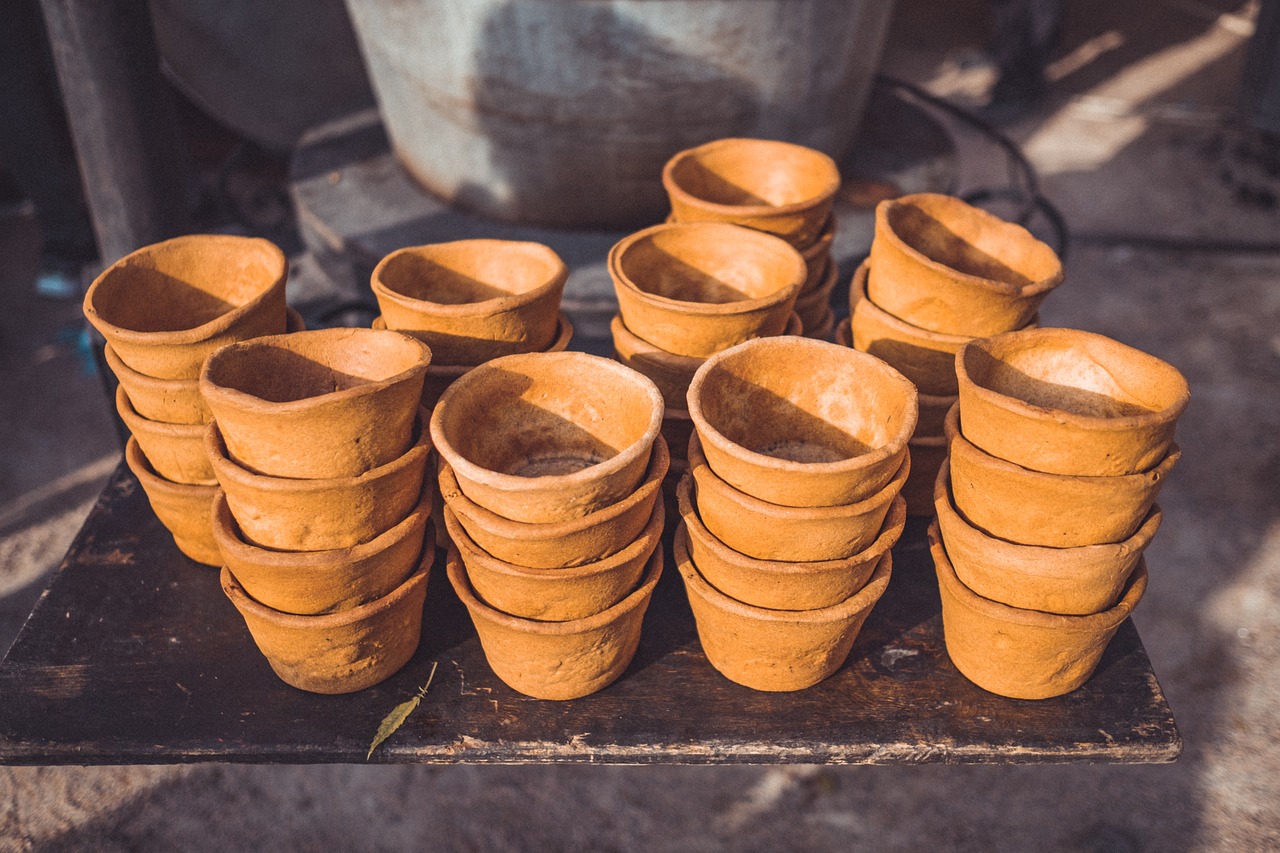
Complementary Colors
When it comes to pottery, the use of can elevate your work from ordinary to extraordinary. Complementary colors are pairs of colors that, when combined, cancel each other out, producing a grayscale color like white or black. They sit opposite each other on the color wheel, creating a striking contrast that can make your pieces pop. For instance, pairing a vibrant orange glaze with a deep blue stain can create a visual tension that draws the eye and captivates the viewer. But how do you effectively incorporate these colors into your pottery without overwhelming the design?
To master the art of using complementary colors, it’s essential to understand their emotional and visual impacts. Complementary colors can evoke a sense of balance and harmony when used correctly. Imagine walking into a gallery filled with ceramic art: the pieces that catch your attention the most often feature these dynamic color combinations. They create a dialogue between the colors, making the artwork feel alive. However, it’s crucial to use these contrasts thoughtfully; too much of a good thing can lead to chaos rather than beauty.
One effective way to utilize complementary colors is through layering techniques. For example, you might apply a base glaze of a warm color and then add a wash of a cool complementary color on top. This technique not only enhances depth but also allows the colors to interact in fascinating ways during the firing process. The result? A stunning visual effect that can change depending on the angle of light or the viewer's perspective. It's like watching a sunset change colors as the sun dips below the horizon—ever-changing and always captivating.
Moreover, you can use complementary colors to guide the viewer’s eye around your piece. By strategically placing these colors, you can lead the viewer to focus on specific areas of your pottery, highlighting details and textures that might otherwise go unnoticed. For example, if you have a beautifully crafted handle, using a complementary color for the surrounding surface can draw attention to that feature, making it a focal point of your design.
In conclusion, the use of complementary colors in pottery is not just about aesthetics; it’s about creating a visual narrative that engages and captivates. By understanding how these colors interact and the emotional responses they can invoke, you can take your ceramic art to the next level. So, the next time you sit down at your pottery wheel, consider how you can incorporate complementary colors to create pieces that are not only beautiful but also meaningful.
- What are complementary colors? Complementary colors are pairs of colors that are opposite each other on the color wheel, such as blue and orange or red and green.
- How do I use complementary colors in my pottery? You can use complementary colors by layering glazes, strategically placing colors to highlight features, or using them to create visual tension in your designs.
- Can I mix complementary colors in my glazes? Yes, but be cautious. Mixing complementary colors can lead to muddy tones, so it's best to experiment with small amounts before applying them to larger pieces.
- What is the effect of using complementary colors? They create a striking contrast that can enhance the visual appeal of your pottery, drawing the viewer's eye and creating a dynamic aesthetic.
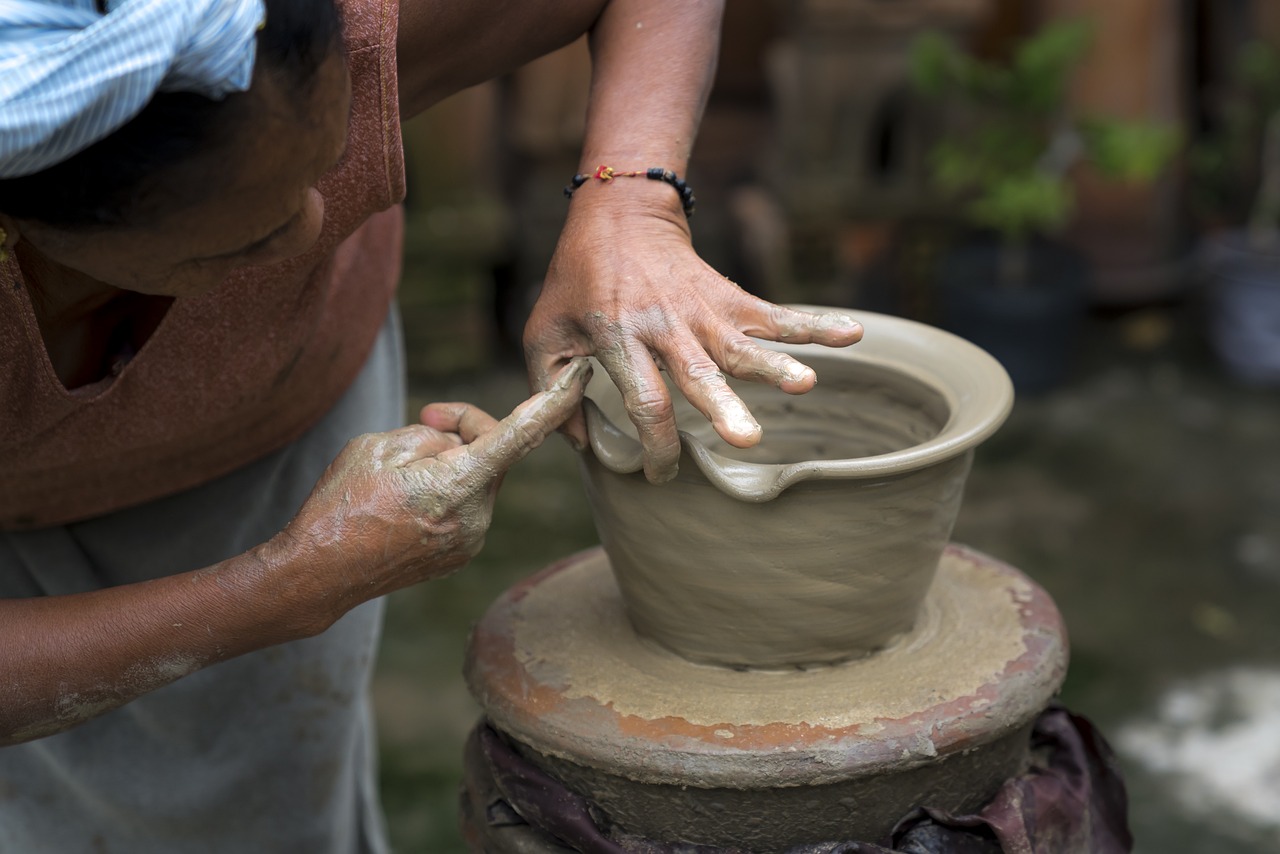
Examples of Complementary Color Combinations
When it comes to creating stunning pottery, the use of complementary color combinations can truly elevate your work. Complementary colors are those that are located directly opposite each other on the color wheel. Using these colors effectively can create a dynamic contrast that catches the eye and enhances the overall aesthetic of your ceramic pieces. For example, pairing a deep, rich blue glaze with a vibrant orange stain can result in a striking visual effect that draws attention and evokes emotion.
Let's dive into some specific examples of complementary color combinations that potters have successfully used:
| Color Pair | Effects |
|---|---|
| Blue & Orange | Creates a vibrant and energetic feel, perfect for modern designs. |
| Red & Green | Offers a classic and festive look, often used in holiday-themed pottery. |
| Purple & Yellow | Brings a lively and playful vibe, ideal for whimsical pieces. |
| Turquoise & Coral | Provides a fresh and tropical feel, great for summer-inspired designs. |
These combinations not only enhance the visual appeal but also evoke specific feelings and themes. For instance, the pairing of red and green can remind viewers of the holiday season, while turquoise and coral might transport them to a sunny beach. The key is to experiment with these combinations and see how they interact with your specific glazes and forms.
Moreover, it's essential to consider the finish and texture of your pottery when applying these colors. A glossy finish may amplify the vibrancy of the colors, while a matte finish can soften the contrast and create a more subdued look. By understanding how these elements work together, you can achieve a unique and personal style that resonates with your audience.
Don't forget that the application technique also plays a crucial role. Whether you are layering glazes, using underglazes, or painting with stains, the method can significantly impact the final appearance of the complementary colors. For instance, a layered approach might allow the colors to blend at the edges, producing a beautiful gradient effect rather than a stark contrast.
In conclusion, exploring complementary color combinations in pottery is not just about choosing colors that look good together; it's about understanding their emotional impact and how they can transform your work. So grab your glazes and stains, and start experimenting with these vibrant pairings to bring your ceramic art to life!
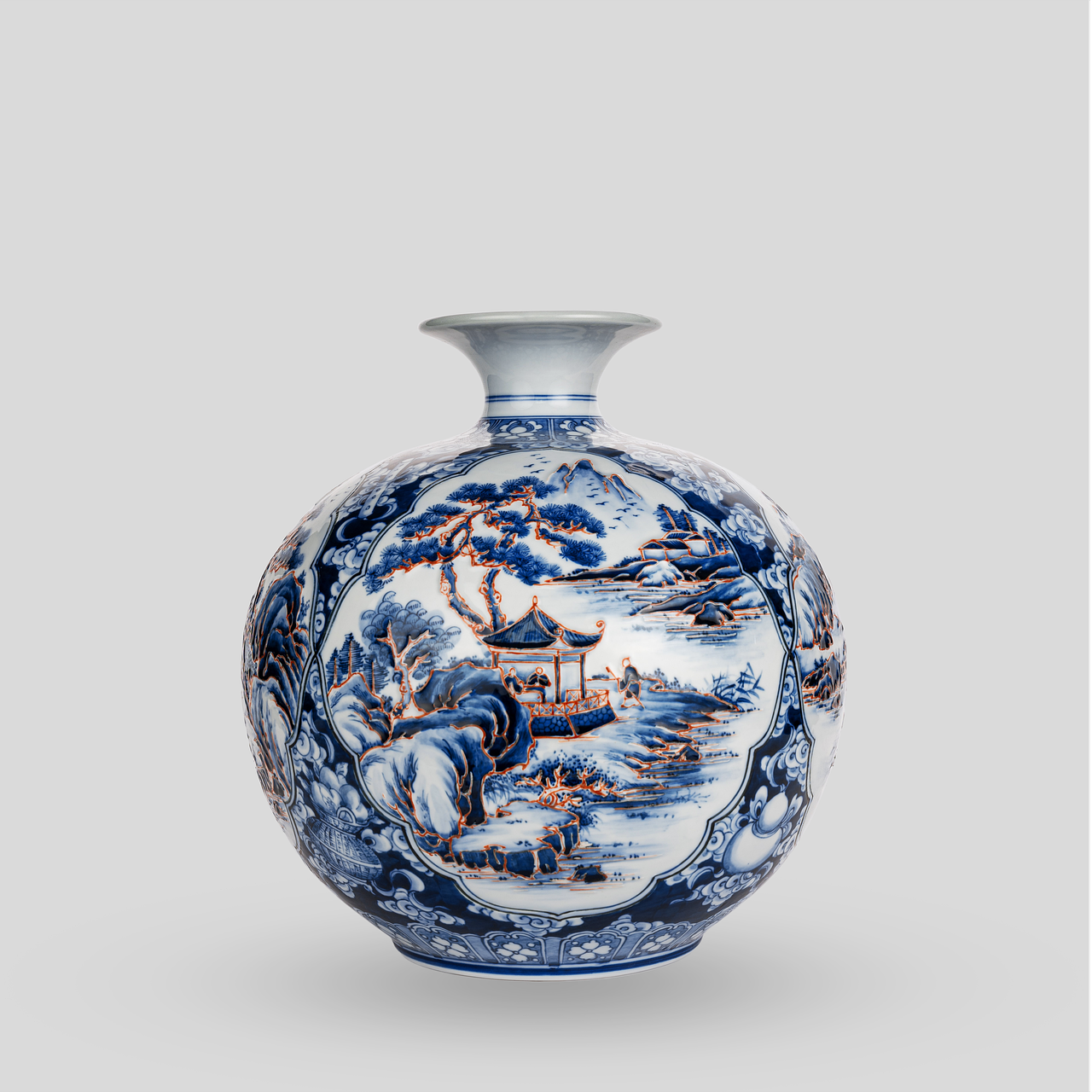
Techniques for Mixing Complementary Colors
Mixing complementary colors in pottery can be both an art and a science. To achieve those striking contrasts that make your pieces pop, you need to understand a few key techniques. First, it’s essential to grasp the concept of color harmony. When you mix complementary colors, you’re essentially balancing two opposing hues on the color wheel—think of it as a dance where each partner enhances the other's beauty. For instance, when you combine blue and orange, you create a vibrant, eye-catching effect that draws the viewer in.
One effective technique is to start with small amounts of each color. This allows you to control the intensity and avoid overwhelming the palette. You can use a palette knife or a brush to mix the colors on a separate surface before applying them to your pottery. This step is crucial because it helps you visualize the outcome without committing to a large batch. Remember, the goal is to create a harmonious blend that maintains the integrity of both colors.
Another technique is layering. Instead of mixing the colors directly, you can apply one color as a base and then layer the complementary color on top. This method not only preserves the vibrancy of each color but also adds depth and dimension to your work. For example, a deep blue base with a light orange glaze on top can create a stunning visual effect that changes with the light.
Additionally, consider experimenting with transparency and opacity. Some glazes are more transparent than others, which means that when you layer them, the underlying color can influence the final appearance. For instance, a transparent yellow glaze over a dark purple base can yield a rich, golden hue that transforms the original color. Understanding how these properties interact can significantly enhance your glazing techniques.
Lastly, keep a record of your experiments. Documenting the ratios and combinations you use will serve as a valuable reference for future projects. It’s like keeping a recipe book for your colors! Over time, you’ll develop a better intuition for which combinations work best for your style and your pottery pieces.
- What are complementary colors? Complementary colors are pairs of colors that, when combined, cancel each other out, producing a grayscale color. They are located opposite each other on the color wheel.
- How do I know which colors are complementary? You can refer to a color wheel, where complementary colors are directly across from each other. For example, red and green, blue and orange, and yellow and purple are all complementary pairs.
- Can I mix complementary colors to create new colors? Yes, mixing complementary colors can create a range of neutral tones and muted colors, depending on the proportions used.
- What is the best way to apply complementary colors in pottery? Layering and glazing techniques are effective methods. Experiment with applying one color as a base and layering the complementary color on top to achieve depth.
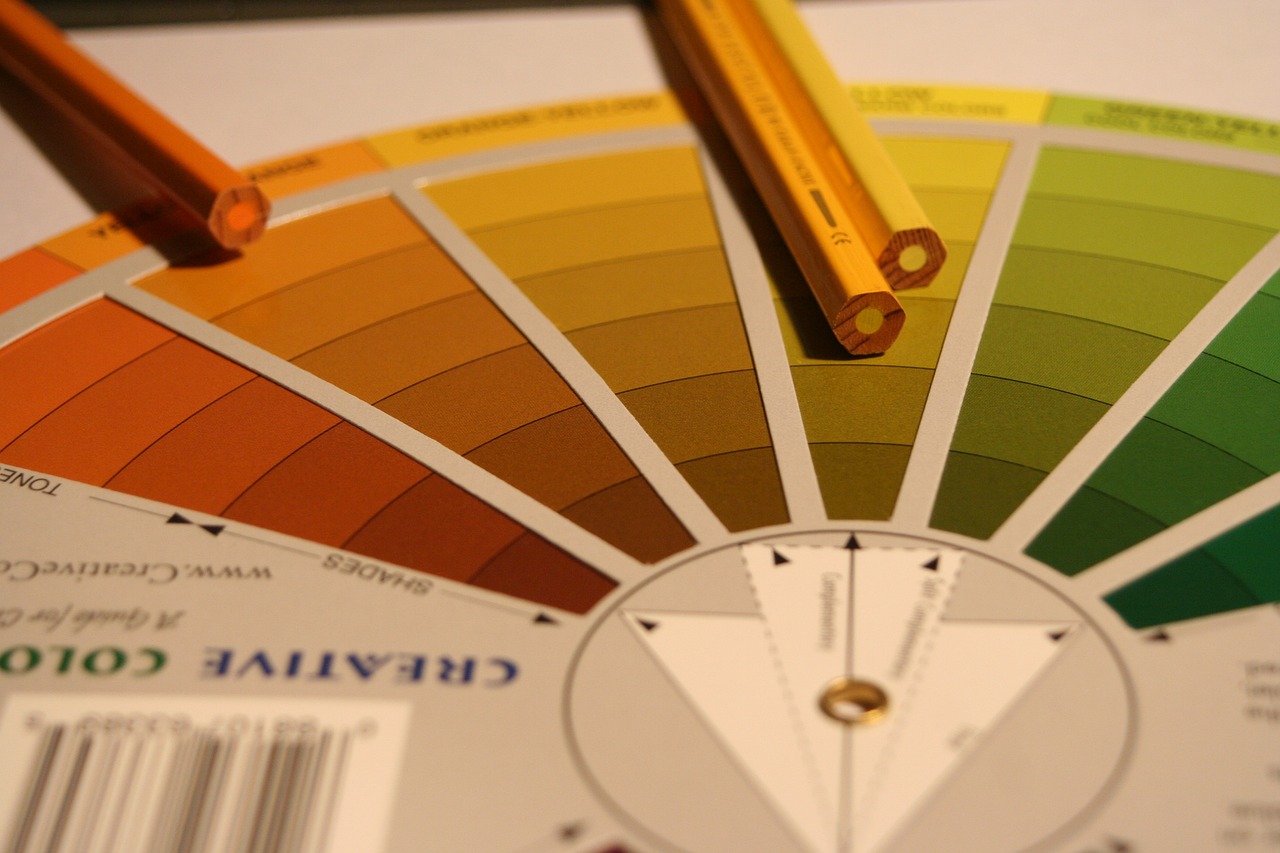
Color Temperature in Glazes
When it comes to pottery, understanding color temperature is like having a secret decoder ring for your glazes. It’s a concept that can dramatically change how your work is perceived and appreciated. Essentially, color temperature refers to the warmth or coolness of a color, which can evoke different feelings and moods in your ceramic pieces. For instance, warm colors like reds, oranges, and yellows tend to create a sense of energy and vibrancy, while cool colors such as blues, greens, and purples can invoke calmness and tranquility. But how do these colors interact when they’re applied to clay?
Imagine walking into a gallery filled with pottery. You might notice that certain pieces draw your attention more than others. This is often due to the temperature of the colors used in the glazes. Warm colors can make a piece feel inviting and lively, while cool colors can lend an air of sophistication and serenity. So, when you’re mixing your glazes, consider the emotional response you want to elicit from the viewer. Do you want them to feel energized? Go for warm colors. Looking for a calming effect? Cool colors are your best bet.
Moreover, the placement of warm and cool colors in your pottery can create a visual dialogue. For example, a warm-colored glaze can be used as a focal point, drawing the eye in, while cool colors can act as a soothing background. This interplay can be likened to a conversation between two friends, where one is lively and animated, and the other is calm and reflective. They complement each other beautifully, enhancing the overall aesthetic of the piece.
To better understand how color temperature works in glazes, let’s break it down further. Here’s a simple overview of warm and cool colors:
| Color Temperature | Examples | Emotional Response |
|---|---|---|
| Warm Colors | Red, Orange, Yellow | Energetic, Inviting, Passionate |
| Cool Colors | Blue, Green, Purple | Calm, Serene, Reflective |
As you experiment with glazes, consider how the temperature of your colors will affect the overall composition of your work. Mixing a warm glaze with a cool one can create a stunning contrast, making your piece pop. But be careful! Too much mixing can lead to muddy colors that lose their vibrancy. It’s all about finding that delicate balance.
In summary, color temperature is a powerful tool in the potter's arsenal. By understanding the emotional impact of warm and cool colors, you can create pieces that not only look beautiful but also resonate with viewers on a deeper level. So next time you’re in the studio, take a moment to consider how the colors you choose can transform your work from ordinary to extraordinary.
- What is color temperature in pottery? Color temperature refers to whether a color is considered warm or cool, impacting the emotional response to the piece.
- How can I use color temperature in my glazes? By mixing warm and cool colors, you can create contrast and focus within your pottery, enhancing its overall aesthetic.
- Can I mix warm and cool colors? Yes! Mixing can create stunning effects, but be cautious to avoid muddying the colors.

Understanding Glaze Chemistry
When it comes to pottery, understanding glaze chemistry is like having a secret map to a treasure chest of colors and textures. Each glaze is a unique recipe, a blend of various ingredients that come together to create stunning visual effects on your ceramic pieces. But what exactly goes into these magical mixtures? Let's break it down.
At its core, glaze chemistry involves a combination of silica, fluxes, and alumina. Silica is the backbone of the glaze, providing the glassy finish that we all admire. Fluxes, on the other hand, lower the melting point of silica, allowing it to fuse during the firing process. Common fluxes include materials like soda ash and feldspar. Finally, alumina acts as a stabilizer, ensuring that the glaze adheres properly to the clay body and doesn’t run off during firing.
Now, the magic happens when you start adding metal oxides to the mix. These oxides are responsible for the vibrant colors we see in glazes. For instance:
| Metal Oxide | Color Produced |
|---|---|
| Copper Oxide | Green to Red |
| Cobalt Oxide | Blue |
| Iron Oxide | Brown to Yellow |
| Manganese Dioxide | Purple to Black |
Each of these oxides can produce a range of shades depending on their concentration and the firing temperature. For example, a little bit of copper oxide can give you a lovely green, but crank up the heat, and you might end up with a fiery red. It’s a fascinating dance of chemistry and artistry!
Moreover, understanding the interactions between these components is crucial. Sometimes, potters might find that what looks good on paper doesn’t translate well in the kiln. This is where experimentation comes into play. By adjusting the ratios of silica, fluxes, and oxides, potters can unlock new colors and textures that are uniquely theirs.
In addition to the basic components, there are also additives that can enhance the glaze’s performance. For instance, bentonite can improve the glaze’s suspension in water, while tin oxide can create an opaque finish. Each additive serves a specific purpose, helping potters to achieve their desired aesthetic.
As you dive deeper into the world of glaze chemistry, remember that every kiln firing is a new adventure. Keep a glaze journal to document your recipes and results. This way, you can replicate your successes and learn from your failures. After all, every great potter was once a beginner who dared to experiment!
- What is the purpose of flux in glaze? Fluxes help lower the melting point of silica, allowing the glaze to melt and form a glassy surface during firing.
- Can I mix different glazes? Yes! Mixing glazes can lead to unique results, but it's important to test them first to avoid unexpected outcomes.
- How can I achieve a specific color? The key is in the metal oxides; experimenting with different concentrations and combinations will help you achieve your desired color.
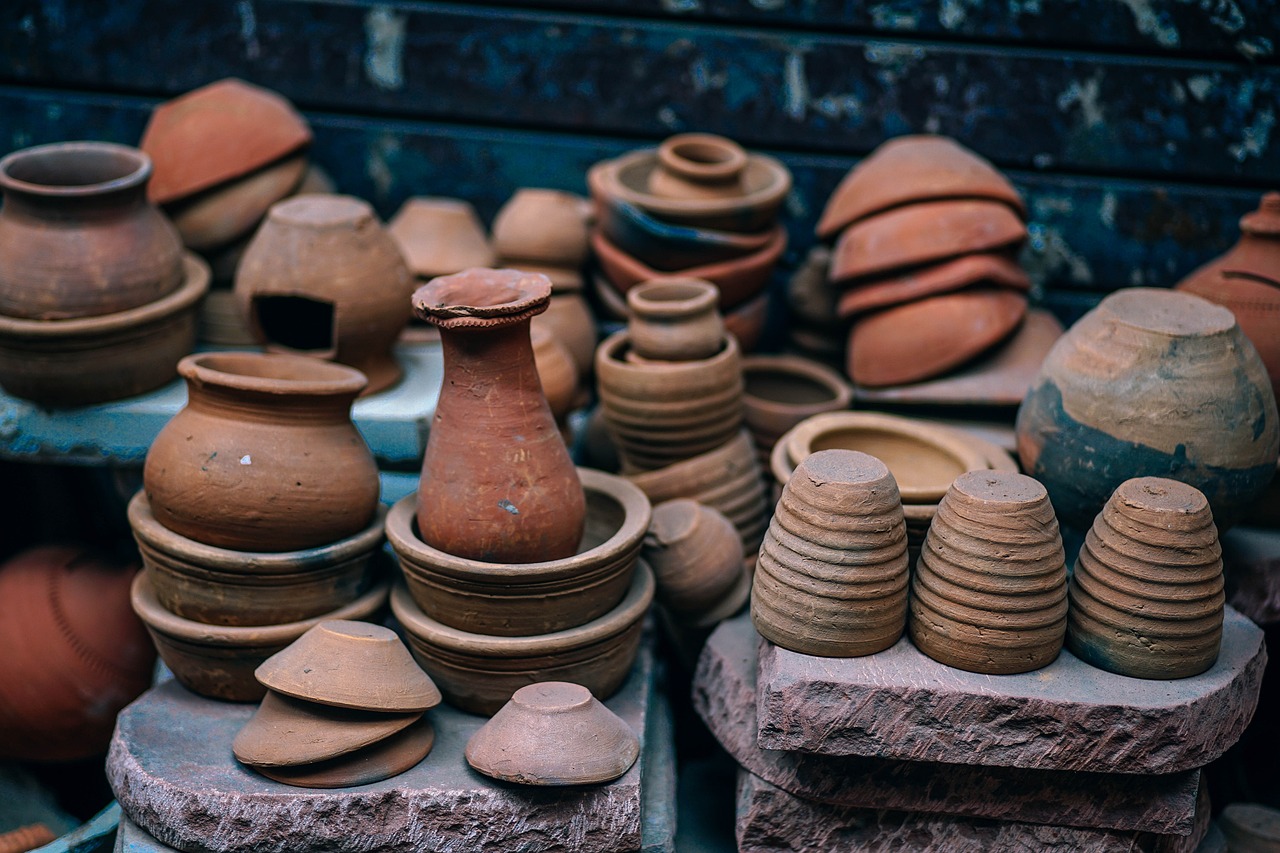
Oxides and Their Color Contributions
When it comes to pottery, the magic of color often lies in the metal oxides used in glazes. Each oxide contributes its unique hue, and understanding these contributions can be the key to unlocking a potter's creative potential. Imagine the vibrant palette of a painter, where each color is derived from a specific pigment; similarly, potters can create stunning effects by mastering the use of various oxides in their glazes.
Let's break down some of the most common metal oxides and their corresponding colors. This knowledge will not only help you choose the right materials but also inspire you to experiment and create your own unique blends. Here’s a quick overview:
| Metal Oxide | Color Contribution |
|---|---|
| Copper Oxide | Green to Blue (depending on the firing temperature) |
| Cobalt Oxide | Deep Blue |
| Iron Oxide | Reddish-Brown to Yellow |
| Manganese Dioxide | Purple to Brown |
| Titanium Dioxide | Opalescent Whites and Creams |
Understanding these oxides is like having a secret recipe for your artistic endeavors. For example, copper oxide can yield a stunning turquoise when fired at a lower temperature, but if you crank up the heat, you might end up with a rich, deep blue. This duality is what makes experimenting with glazes so exciting. The key is to keep a detailed record of your experiments, noting the amounts of each oxide used, the firing temperature, and the results. This will help you replicate successful combinations and avoid those that didn’t quite hit the mark.
Furthermore, it’s essential to consider the interaction of these oxides with each other. Just like a great band, where each instrument brings something unique to the table, oxides can work together to create stunning effects. For instance, combining iron oxide with copper oxide can produce a range of earthy tones that are both captivating and sophisticated.
As you delve deeper into the world of glaze chemistry, you’ll find that the possibilities are nearly endless. Don't hesitate to experiment with different combinations of oxides; after all, the beauty of pottery lies in the artistic journey as much as the final product. So grab your tools, get your hands dirty, and let the colors speak for themselves!
- What are the best oxides for beginners? Iron oxide and cobalt oxide are great starting points due to their availability and predictable results.
- Can I mix different oxides? Absolutely! Mixing oxides can lead to unique colors, but it's essential to test small batches first.
- How do I know which oxide to use? Consider the desired color, the firing temperature, and the type of clay you are using.

Experimentation with Stains
When it comes to pottery, opens up a whole new world of creativity and expression. Unlike traditional glazes, which often provide a glossy finish, stains allow potters to achieve a variety of textures and effects that can dramatically alter the look of a piece. Stains can be used to enhance the natural beauty of clay, adding depth and character that glazes might not provide. This versatility makes stains an essential tool in every potter's toolkit.
One of the most exciting aspects of using stains is the ability to create unique color combinations. Stains can be mixed and layered, allowing for an endless range of hues and patterns. For instance, a potter might apply a base layer of a vibrant red stain and then overlay it with a translucent blue stain. The result? A stunning, rich purple that changes depending on the light and angle. This layering technique not only enhances the visual appeal but also adds a tactile dimension to the work.
In addition to color, stains can also affect the surface texture of pottery. Some stains can be applied in a thick manner, creating a raised effect that adds interest and draws the eye. Others can be diluted to create a wash, allowing the natural clay body to show through, which can be particularly striking. This interplay between stain and clay can lead to innovative designs that push the boundaries of traditional pottery.
Potters should also consider the firing temperature when working with stains. Different stains respond differently to heat, and some may change color or even burn off entirely if fired at the wrong temperature. Therefore, it’s crucial to conduct tests before committing to a final piece. A simple test tile can be a potter's best friend, allowing them to experiment with various stains and firing conditions without risking their main work. Here’s a quick overview of how different stains might behave:
| Stain Type | Firing Temperature | Color Result |
|---|---|---|
| Iron Oxide | Low Fire (Cone 06) | Warm Brown |
| Cobalt Carbonate | Mid Fire (Cone 5) | Deep Blue |
| Manganese Dioxide | High Fire (Cone 10) | Purple to Black |
Another fascinating technique is the use of under-glazes, which can be applied before glazing to create intricate designs. These under-glazes can be painted, brushed, or even sprayed onto the surface, allowing for detailed artwork that can be preserved beneath a clear glaze. This method not only protects the design but also adds a glossy finish that enhances the overall look of the piece.
In conclusion, experimenting with stains not only expands a potter’s creative horizons but also allows for personalized touches that can make each piece truly one-of-a-kind. Whether it's through layering colors, adjusting textures, or using under-glazes, the possibilities are as vast as a potter's imagination. So grab those stains, mix them up, and let your creativity run wild!
- What are stains in pottery? Stains are colorants used to enhance the surface of ceramic pieces, providing a range of colors and textures.
- How do I apply stains? Stains can be brushed, sprayed, or dipped onto the pottery surface, and they can be layered for unique effects.
- Do stains change color when fired? Yes, different stains can react to heat in various ways, which is why testing is essential before final application.
- Can I mix stains? Absolutely! Mixing stains can lead to exciting new colors and effects, but always test your mixtures first.
Frequently Asked Questions
- What is color theory and why is it important for potters?
Color theory is the study of how colors interact and the principles behind their combinations. For potters, understanding color theory is crucial because it helps in selecting glazes and stains that not only complement each other but also enhance the visual appeal of ceramic pieces. When you grasp these concepts, you can create stunning works of art that capture attention and evoke emotion.
- How can I use the color wheel in my pottery?
The color wheel is a fantastic tool for potters! It helps you visualize relationships between colors, guiding you in creating harmonious combinations. By selecting colors that are adjacent to each other on the wheel, you can achieve a serene look, while contrasting colors can add excitement. Think of the color wheel as your personal guide to a world of vibrant possibilities!
- What are complementary colors and how can they enhance my pottery?
Complementary colors are pairs of colors that are opposite each other on the color wheel. When used in pottery, these colors create striking contrasts that can make your pieces pop. For example, pairing a rich blue glaze with a warm orange can draw the eye and add depth. It’s like adding a dash of spice to a dish—just the right amount can elevate the entire experience!
- Can you provide examples of successful complementary color combinations?
Absolutely! Some popular complementary color combinations include:
- Blue and Orange
- Red and Green
- Purple and Yellow
These pairings can transform a simple piece into a visual masterpiece, making your pottery not just functional but also a feast for the eyes!
- What techniques can I use for mixing complementary colors in glazes?
Mixing complementary colors can be tricky, but with the right techniques, you can achieve beautiful results. Start by testing small batches to see how the colors interact. Use a clear glaze as a base to maintain vibrancy, and consider layering the glazes instead of mixing them completely. This way, you can preserve the integrity of each color while creating a unique blend!
- How does color temperature affect pottery design?
Color temperature refers to the warmth or coolness of a color. Warm colors (like reds and yellows) tend to advance visually, making pieces feel more inviting, while cool colors (like blues and greens) recede, creating a calming effect. Understanding this can help you design pieces that evoke specific feelings—like a warm sunset or a cool ocean breeze!
- What are the key components of glaze chemistry?
Glaze chemistry involves understanding the ingredients that make up glazes, such as silica, fluxes, and metal oxides. Each component plays a role in determining the color, texture, and finish of the glaze. By familiarizing yourself with these elements, you can make informed choices that lead to stunning results in your pottery!
- How do metal oxides contribute to glaze colors?
Metal oxides are the secret sauce of glaze colors! Different oxides produce various hues—like copper for greens, cobalt for blues, and iron for earthy tones. By experimenting with different combinations of these oxides, you can create a wide range of beautiful glazes that will make your pottery stand out!
- What are stains and how can they be used in pottery?
Stains are a fantastic alternative to traditional glazes, offering potters the ability to achieve specific effects and vibrant colors. They can be applied to greenware or bisque-fired pieces, allowing for creative freedom in design. Using stains can be like painting on a canvas, giving you the chance to explore textures and details that glazes might not allow!



















